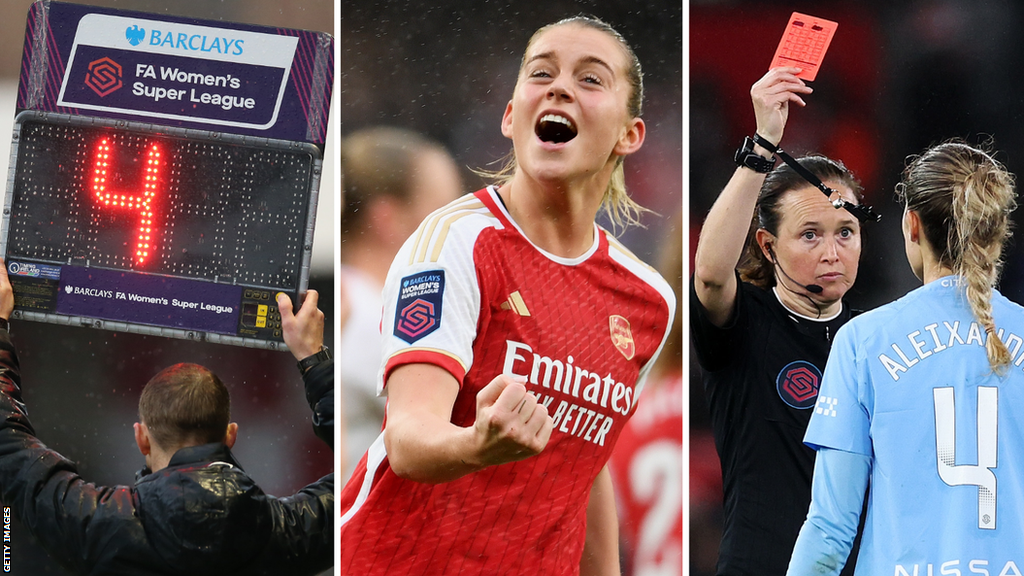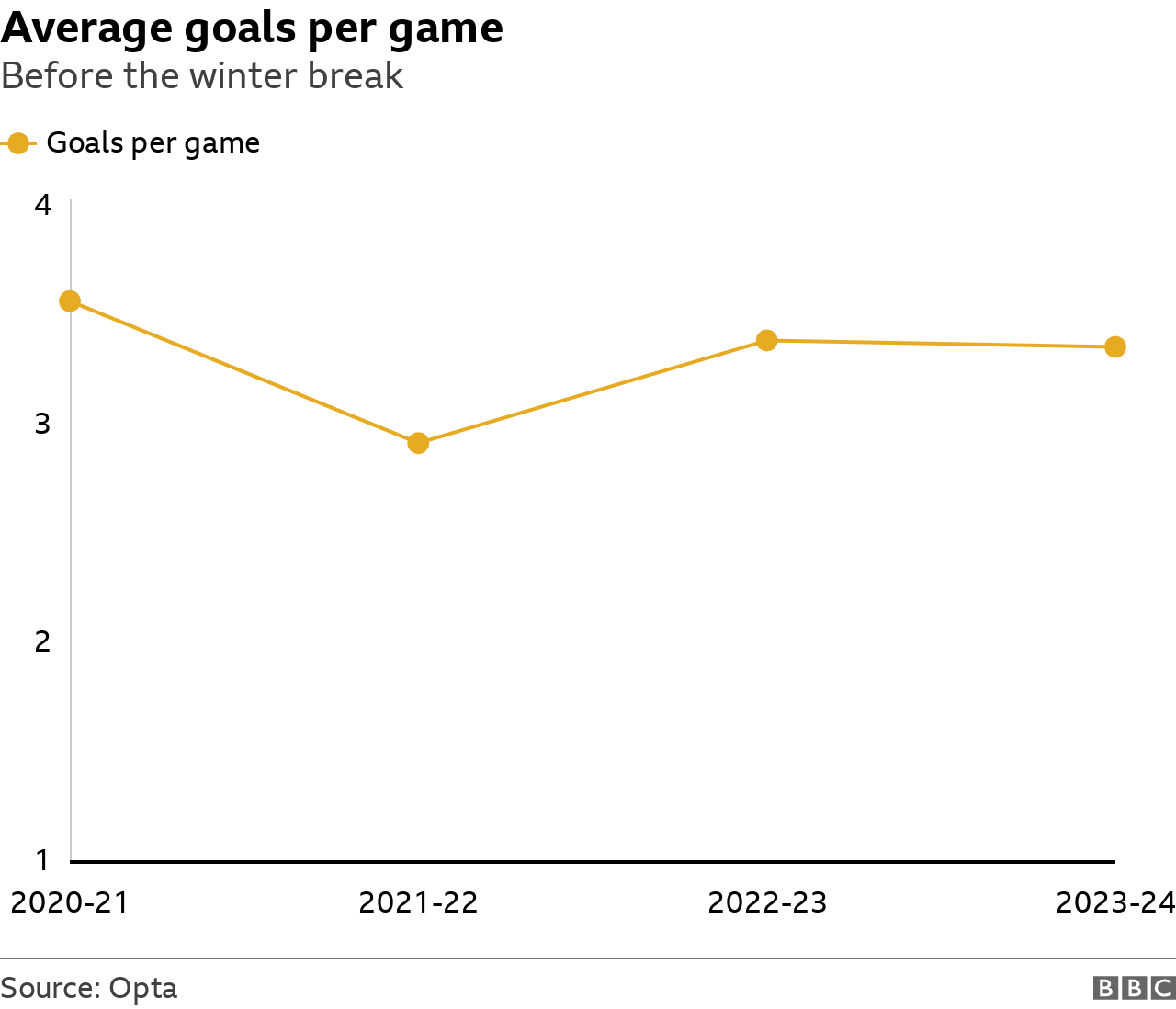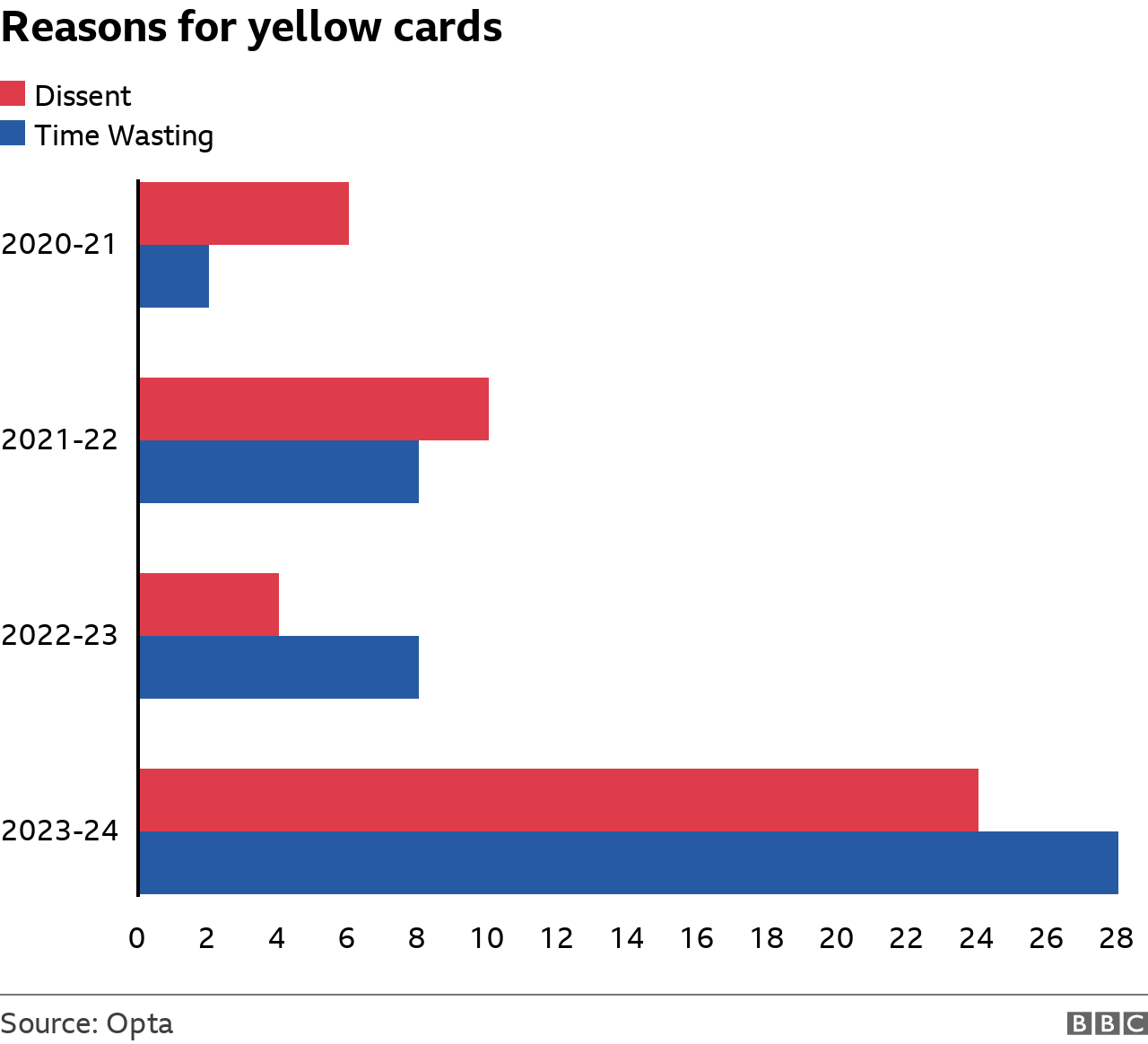Women's Super League: Longer games, more cards, same goals - the best stats so far
- Published

BBC Sport has looked at the length of matches, goals scored and the number of cards being awarded
The Women's Super League has reached the winter break.
All of the sides have played their first 10 matches of the campaign so the table, and trends in the season, have started to take shape.
BBC Sport has delved into the numbers and picked out the most interesting of the WSL season so far.
Lowest points required in tightest title race?
League leaders Chelsea have averaged 2.5 points per game this season.
They have won the last three titles with eventual finishes of 2.59, 2.54 and 2.63 points per game.
The Blues are on course to finish the season with 55 points, which would be the lowest points tally by the champions across a 22-game season.
There are some positives to take for Chelsea, though - in 2020-21 and 2021-22 they averaged 2.5 and 2.33 points per game respectively at the winter break.
The gap is closing at the top of the table and only three points separate the top three teams.
It was six, five and five points at this stage of the past three seasons.

Closest relegation battle yet?
Only three points separate the bottom three clubs - Bristol City, West Ham and Brighton - in the WSL before the break.
That is a particularly low figure compared to recent years - it was seven in 2022-23 and nine in 2021-22.
Bristol City prop up the standings with five points from 10 games, West Ham have five and a better goal difference, while Brighton have eight.
Five is also more than usual. Last season bottom-placed Leicester City had none, in 2021-22 Birmingham City had one, and in 2020-21 Bristol City had two.
The season looks poised for an incredibly close relegation battle once it resumes in late January, with seventh-placed Everton only on 11 and still in danger of being reeled in.

Quality gap closing as games get longer
Even outside the title race, the dominance of the traditional 'big four' of Chelsea, Arsenal, Manchester United and Manchester City is reducing.
Just 10 points separate leaders Chelsea and sixth-placed Tottenham going into Christmas.
That is a clear decrease from previous seasons - in 2020-21 it was 13, in 2021-22 it was 12, and in 2022-23 it was 15.
Similarly to across the men's game, the length of matches has extended drastically as part of a new directive from law makers Ifab.
The average length of a WSL game this season has been 101 minutes and 50 seconds.
That is more than three minutes longer than the past two seasons, and more than four minutes longer than in 2020-21.
There was a feeling that might result in more goals, but that has not been the case so far in the WSL.
As shown below, the average goals per game this season is 3.35 - down from 3.38 last season and 3.56 in 2020-21, but up from 2.91 in 2021-22. The dip there may be explained by players missing games because of the Covid-19 pandemic.

The battle for the golden boot
Khadija Shaw narrowly missed out on last season's golden boot, but the Manchester City striker currently leads the standings.
She has scored nine goals and registered two assists, while three players - Chelsea's Lauren James, Tottenham's Martha Thomas and Brighton's Elisabeth Terland - are joint second with seven goals.
Aston Villa's Rachel Daly was last year's winner after scoring 22 goals across the season. Shaw netted 20.
Daly's tally was the joint most by any player in a campaign, level with Vivianne Miedema's goals for Arsenal in 2017-18.
Shaw led the golden boot race with eight by the winter break last season, Sam Kerr had nine at this stage in 2021-22 and Miedema had 11 in 2020-21.
The Jamaica forward has averaged a goal a game and is on course to score 21 if she maintains that pace.
Stricter refereeing results in sharp rise in cards
The WSL has not been immune to feeling the impact of refereeing changes this season.
The head of referees' body PGMOL Howard Webb said in August he was "determined" that officials would not "turn a blind eye" to bad behaviour from players and coaches this season.
As a result, officials have been increasingly strict on dissent and time-wasting.
There has been a 600% increase in cards for dissent compared to last season (four to 24), while cautions for time-wasting have increased from eight to 28.
The two accounted for 9.4% of bookings at this stage last season, they now account for 30.2%.

The total number of yellow cards has increased from 124 in both of the last two seasons to 172 this campaign.
In Manchester City's game against Chelsea in October, Alex Greenwood was controversially sent off when she received a second yellow card for time-wasting after taking too long to take a free-kick.
Pundits were unhappy with the decision, with Ex-England goalkeeper Rachel Brown-Finnis describing it as a "ridiculous" decision.
There have been eight red cards this season - a significant increase from the four, four and three in the previous three seasons.
Man City v Chelsea: Alex Greenwood sees second yellow card for time-wasting